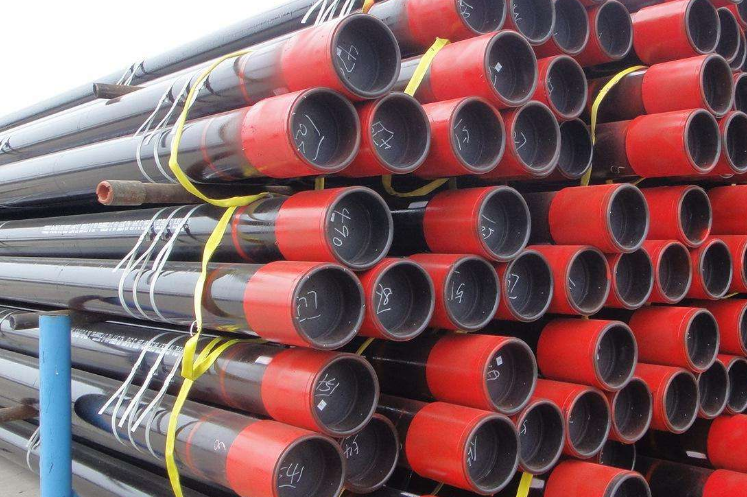
How to Measure the Length of Oil Casing Pipe?
According to the different requirements of the production process of the oil casing pipe, the length measurement system of the oil casing also has a variety of measurement methods. Let us look at the basic three measurement methods.
Common measurement methods and ranges for oil casing pipe length:
a. Direct measurement method: Place the casing flat on a horizontal surface, and use a soft ruler or tape measure to measure the length of the casing along the outer line of the casing. This method is simple and easy to implement and suitable for shorter lengths of casing.
b. Three-point method: Select one point at both ends and the middle of the casing, use a soft ruler or tape measure to measure the distances between these three points, and then add them up to get the length of the casing. This method is suitable for longer casing lengths and improves the accuracy of measurement.
c. Steel ruler measurement method: Use a wider steel ruler, wrap it around the outside of the casing, and read the length value on the steel ruler to determine the casing length. This method is suitable for thicker casing.

1. Length measurement with grating ruler
The basic principle is to install two fixed-length grating rulers on the outer side of the oil casing pipe. The rod-shaped cylinder is used to drive the grating rulers near the two ends of the oil casing pipe. The length of the oil casing pipe is measured by the phenomenon of light interference.
It has the characteristics of high precision. However, grating rulers are expensive, difficult to maintain, and sensitive to dust and site vibration.
2. Camera length measurement
Camera length measurement is achieved through image processing. The principle is to install a series of equidistant photoelectric switches on one section of the oil casing conveying roller, and add a light source and a camera on the other section. When the oil casing pipe passes through this area, the length of the oil casing pipe can be determined according to the position of the image taken by the camera on the screen according to a photoelectric switch.
Its feature is that online measurement can be achieved, and length data can be obtained when the elbow passes through the length measurement area without interval. The disadvantage is that if no special light source is used, the elbow will be interfered by external light. After using a special light source, due to the high brightness of the curved end of the petroleum casing, the light reflection is very strong, which may easily cause reading errors.
3. Encoder length measurement
The principle is to install an encoder on the oil cylinder, use the oil cylinder to drive the oil casing to move on the drum, and install a series of equidistant photoelectric switches on the other side. When the oil cylinder pushes the elbow to contact the photoelectric switch, the distance of the oil cylinder can be calculated according to the recorded encoder readings, thereby calculating the length of the elbow.
The characteristic is that the degree of curvature needs to be increased when measuring the length. In addition, there are errors in the detection of the photoelectric switch, and sufficient measurement may be required.
Oil casing pipe length range:
Oil casing pipe is a type of pipe installed in an oil well. Its main function is to protect the drill bit and well wall. It can also support the well wall, control well kicks, and transport oil and gas. The length range of oil casing mainly differs according to different specifications and uses. Based on the information provided, the length range of oil and casing can be roughly divided into three categories:
R1: Length range 4.88-7.62m.
R2: Length range 7.621-10.36m.
R3: Length range 10.36-14.63m.
These length ranges are specified according to oil casing standards and are used to meet different geological conditions and drilling needs. For example, the length specifications of API long round buckle oil casing include different length ranges such as R-1, R-2, R-3, etc. to adapt to different drilling and oil production needs. In addition, the number of meters represented by the special words R1, R2, and R3 for oil casing are also consistent with the above range, further illustrating the general acceptance and application of these length ranges.


